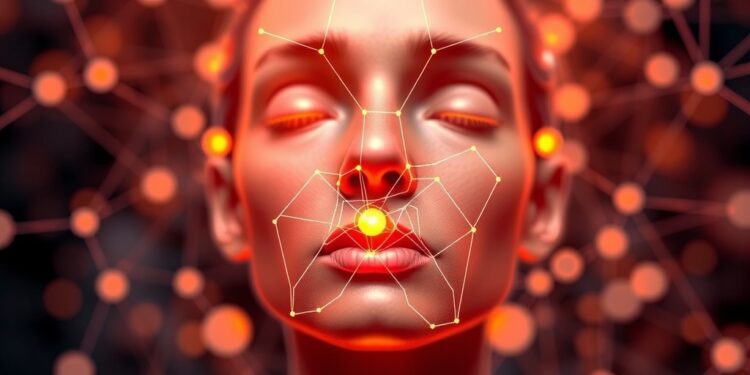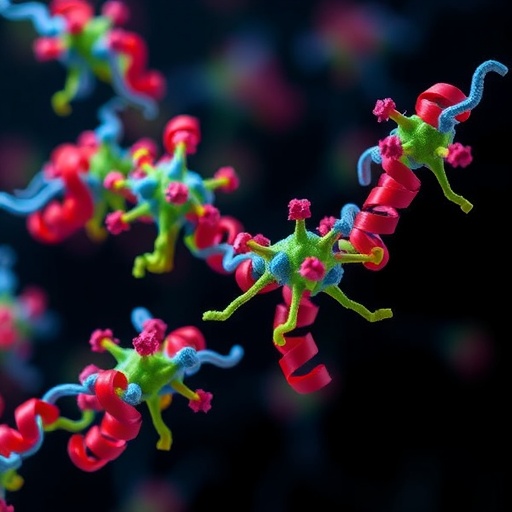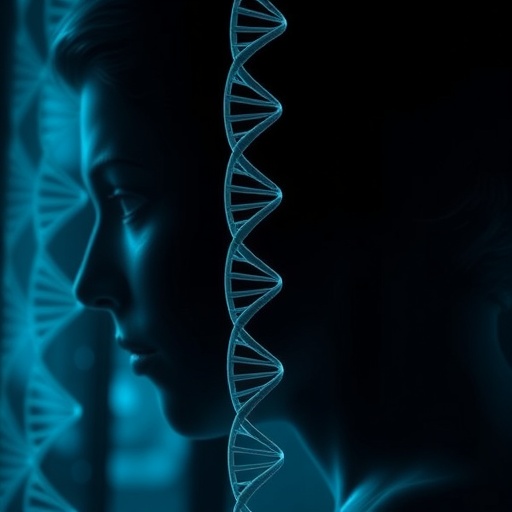
In a groundbreaking study published in the March issue of Plastic and Reconstructive Surgery, compelling evidence has emerged regarding the efficacy of Botox injections for patients undergoing nerve transfer surgery for facial palsy. The research suggests that the neurotoxic agent, botulinum toxin type A (BoNT-A), can significantly enhance facial symmetry by mitigating the overactivity of muscles on the unaffected side of the face, a common issue faced by individuals suffering from this debilitating condition.
Facial paralysis, resulting from various causes such as traumatic injuries, surgical complications, or disease, can lead to pronounced asymmetry and functional impairments. Patients often undergo nerve transfer surgeries aimed at reviving facial nerve function, yet many experience continued drooping of the mouth and other asymmetric facial features post-surgery. This persistent condition can severely affect a person’s quality of life, leading to emotional and psychological distress.
The study, spearheaded by Dr. Ye-Chen Lu and Dr. Wei Wang from Shanghai Jiao Tong University School of Medicine, delves into the cerebral mechanisms underlying the visible improvements observed in patients treated with Botox. Researchers employed functional magnetic resonance imaging (fMRI) as a tool to measure alterations in brain activity pre- and post-treatment, unveiling a deeper connection between neurological function and outcomes following the administration of BoNT-A.
The research involved a cohort of 38 patients who had undergone nerve transfer surgery after the excision of benign tumors, specifically acoustic neuromas. These patients, experiencing debilitating drooping of the oral commissure postoperatively, were treated with either a series of Botox injections targeting the unaffected side of their faces or placed in a control group without the injections. The results were nothing short of remarkable.
Patients receiving the Botox treatment exhibited noticeable improvements in facial symmetry that transcended the immediate effects of the injections themselves. Interestingly, these enhancements persisted beyond the expected window of efficacy for Botox, suggesting a phenomenon of neuroplasticity induced by the treatment. This notion aligns with the hypothesis that the application of BoNT-A may foster brain networks’ adaptive responses, potentially reprogramming muscle movement and enhancing functional restoration.
Before and one year after the surgical and Botox interventions, significant changes in brain network connectivity were noted in patients receiving the neurotoxin. Five out of nine resting state networks (RSNs) exhibited marked differences between the treated and control groups. Patients in the Botox group demonstrated enhanced interactions among several RSNs, including vital sensorimotor and visual networks that are critical for facial function.
The enhanced brain connectivity may shed light on the long-lasting outcomes observed in these patients. The researchers hypothesized that the application of BoNT-A essentially opens a “window of time” for reinnervation, allowing the brain to adapt to altered muscle dynamics and improve overall motor control of facial expressions. The implications of these findings suggest a promising avenue not only for treating facial palsy but also for understanding neurologically induced recovery processes across various disorders.
These astonishing results underscore the significance of combining surgical and non-surgical approaches in the management of facial paralysis. Notably, the role of BoNT-A extends beyond mere cosmetic adjustments; it engages integral neurological pathways and promotes recovery at both conscious and subconscious levels. Hence, the integration of Botox into the rehabilitation framework for facial palsy patients opens new possibilities in patient care.
The narrative that emerges illustrates the complexity of treating facial asymmetry and the necessity for a multidisciplinary approach. Surgeons, neurologists, and rehabilitation specialists may benefit from this innovative strategy that harnesses the power of neurotoxic agents not merely for aesthetic purposes but as a therapeutic modality aimed at restoring function and symmetry.
In understanding the connection between facial nerve function and its neurological underpinnings, this study paves the way for further research into how non-invasive treatments such as Botox can be optimized for other forms of neurological rehabilitation. As researchers continue to explore these cutting-edge interventions, the prospect of significantly enhancing patient quality of life becomes increasingly attainable.
The ongoing quest for effective solutions for facial palsy not only impacts the medical community but also offers hope for countless individuals enduring the profound effects of facial paralysis. With continued investigations into the neural effects of treatments like BoNT-A, we may well be on the brink of transformative strategies that redefine rehabilitation for those affected by neurological disorders.
In conclusion, the intersection of neuroscience and aesthetic treatment methods illustrates a unique opportunity to foster recovery and improve outcomes for patients with facial paralysis. The evidence presented by Dr. Lu and Dr. Wang provides a compelling rationale for adopting BoNT-A within therapeutic protocols post nerve transfer surgery, emphasizing the need for innovation in the realm of medical treatments for facial disorders.
Subject of Research: The efficacy of Botox in improving facial symmetry post-nerve transfer surgery for facial palsy.
Article Title: Facial Symmetry Enhancement and Brain Network Modifications in Facial Palsy Patients after Botulinum Toxin Type A Treatment
News Publication Date: March 4, 2025
Web References: Plastic and Reconstructive Surgery
References: Research led by Dr. Ye-Chen Lu and Dr. Wei Wang from Shanghai Jiao Tong University School of Medicine
Image Credits: No image credits available.
Keywords: Facial palsy, Botox, nerve transfer surgery, fMRI, neuroplasticity, brain connectivity, rehabilitation, facial asymmetry.
Tags: Botox treatment for facial palsycerebral mechanisms of facial recoveryefficacy of botulinum toxin type Aemotional impact of facial paralysisfacial symmetry improvementsfunctional magnetic resonance imaging in researchnerve transfer surgery outcomesneural networks and brain adjustmentsneurological function and facial aestheticspost-surgery recovery for facial palsyquality of life after nerve surgerytreatment for asymmetric facial features





